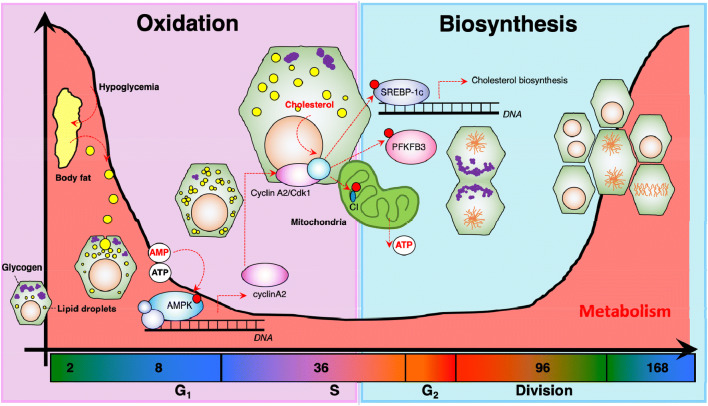Fig. 4.
Interaction of cell cycle genes with major metabolic pathways. After 2/3 mass removal, there are significant changes in hemodynamic pressure in the liver, leading to oxidative stress. Moreover, resection of 70% of the hepatic glycogen stores leads to hypoglycemia, which in turn promotes lipolysis of adipose tissue. These lipids are transported into hepatocytes in the initiation phase of regeneration and produce energy through oxidation. When DNA replication and cellular division starts, there is a reduction of oxidation and concomitantly activation of biosynthetic pathways. In this context, CDK1 may regulate metabolite production in the mitochondria, like NADH and FAD, or it may directly phosphorylate transcription factors like SREBP-1c, or other enzymes involved in anabolic pathways like PFKFB3

